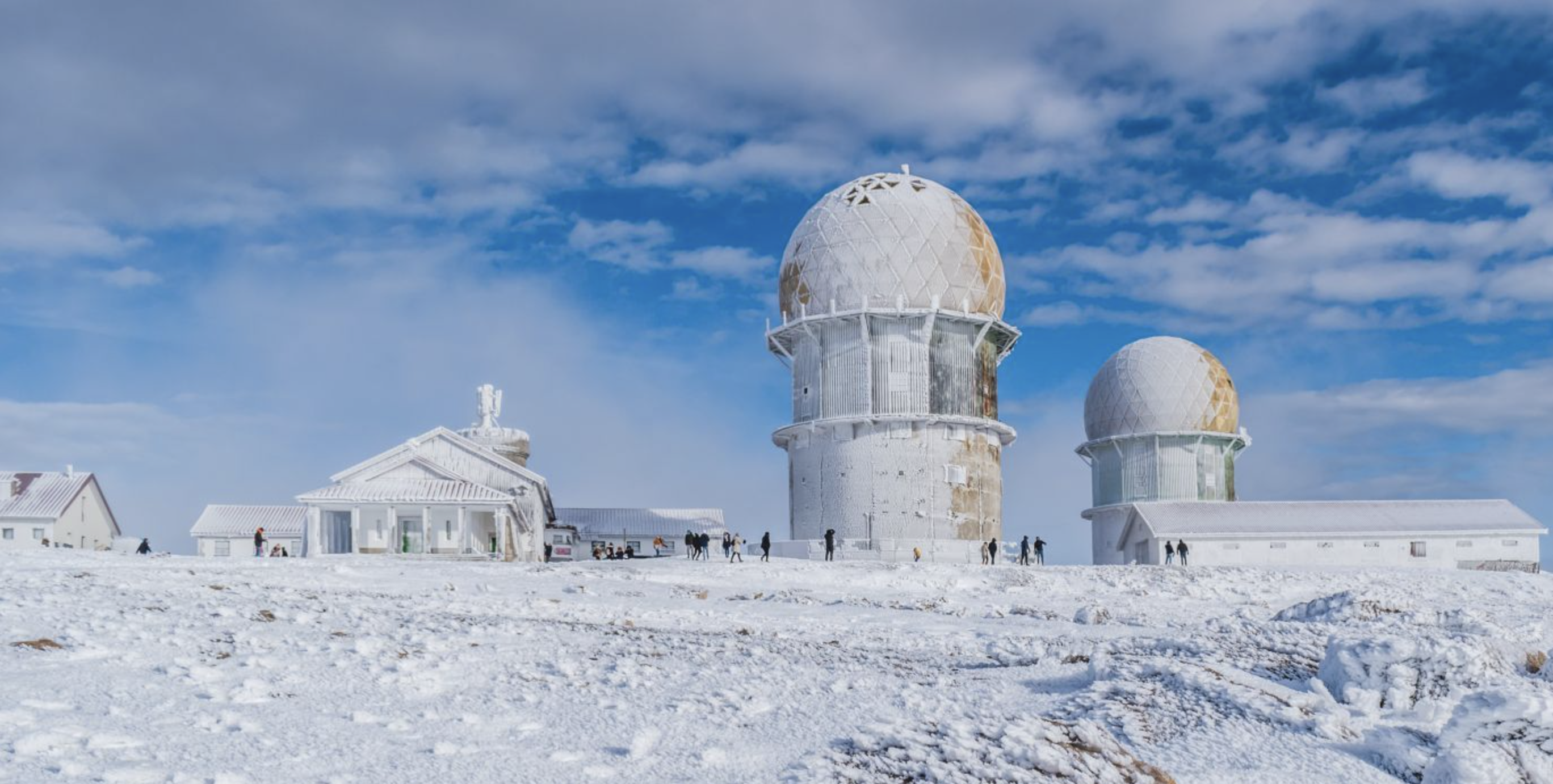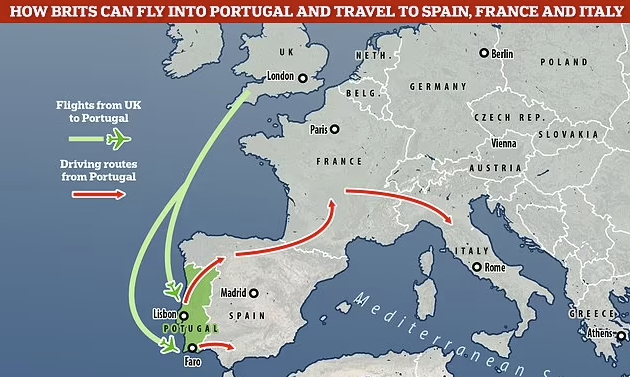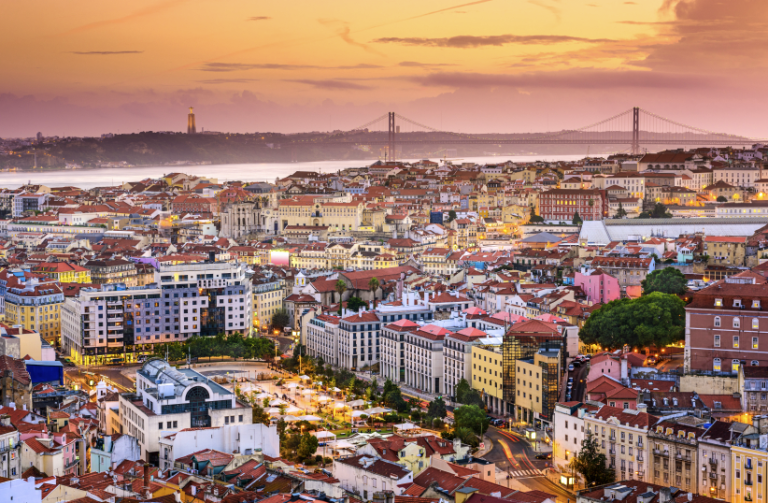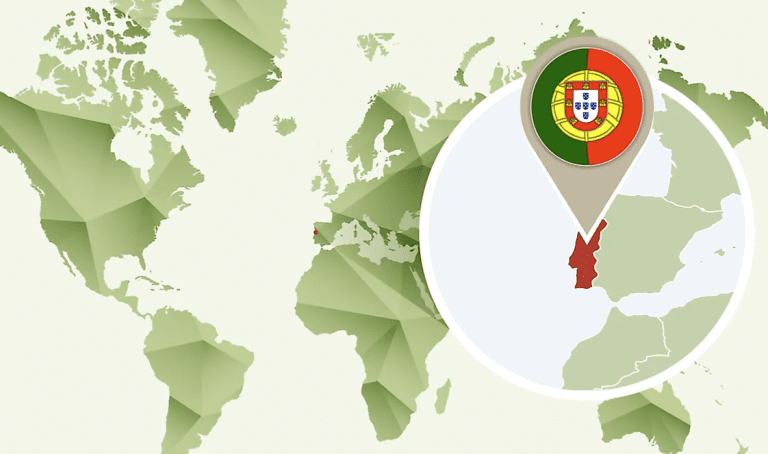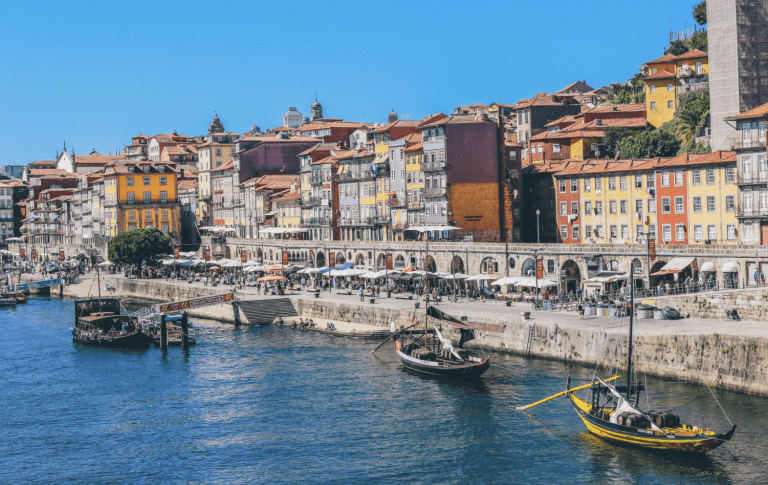Does it snow in Portugal? This is a question that many travelers and weather enthusiasts might ask when considering this beautiful European country as their next destination. To understand the influence of Portugal’s Mediterranean climate on its weather, we will explore various regions within the country and investigate whether snowfall is possible in certain areas.
We’ll discuss where to find snow in mountainous areas such as Serra da Estrela mountains, and uncover other high-altitude locations where you can experience wintry conditions. Furthermore, for those interested in skiing opportunities or winter activities beyond skiing, we will provide an overview of facilities at ski resorts and suggest some unique experiences to enjoy during your stay.
Lastly, we will guide you through preparing for winter weather in Portugal by sharing essential items to pack and tips on staying warm and dry. Additionally, does it snow in Porto? We’ll explore Porto’s colder climate compared to Lisbon’s milder temperatures while suggesting attractions worth visiting during winter months.
Portugal’s Climate and Temperature Ranges
Portugal boasts a mild climate with average annual temperatures ranging from 5°C to 27°C, making it a popular destination for travelers seeking milder weather conditions.
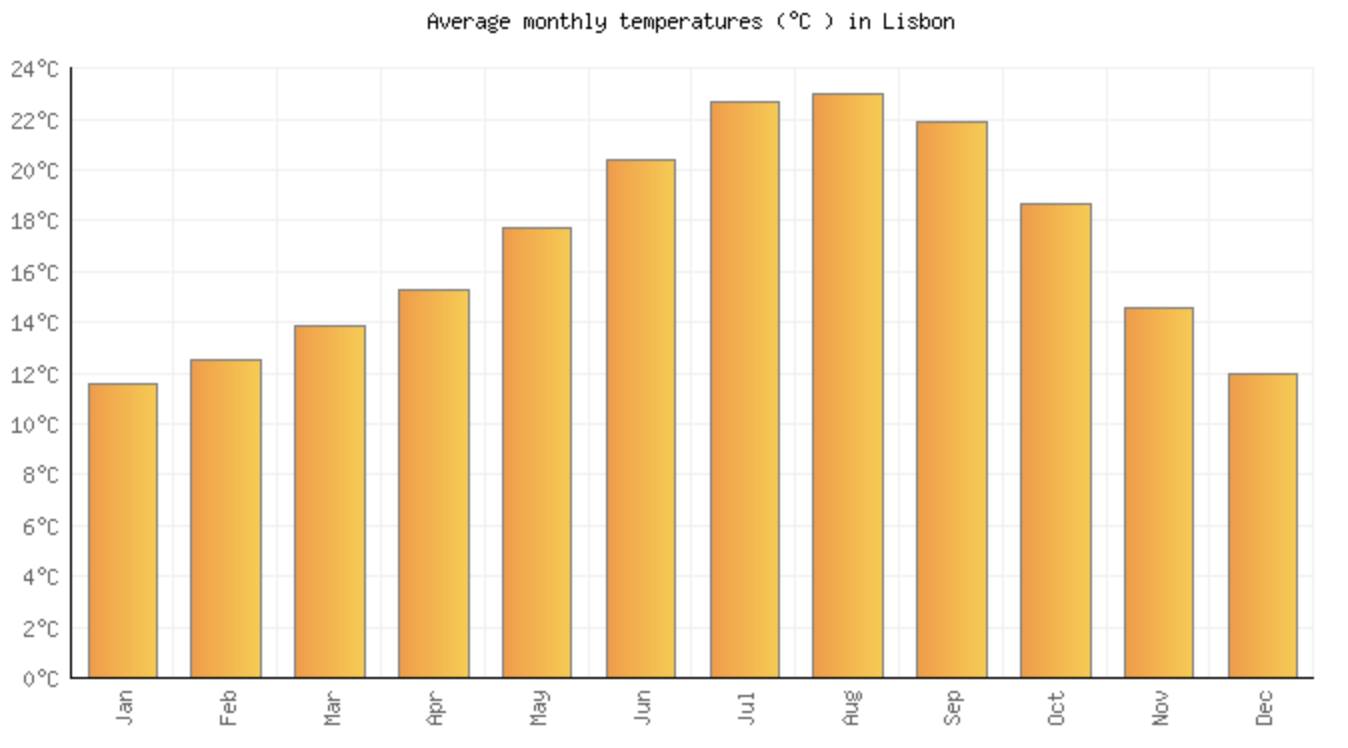
Average Annual Temperatures Across Different Regions
The climate in Portugal varies significantly between different regions due to its diverse geography, with coastal areas like Lisbon and Faro enjoying a Mediterranean climate characterized by hot summers and mild winters.
- Lisbon: Average annual temperature ranges from 11°C to 24°C.
- Faro: Average annual temperature ranges from 12°C to 28°C.
- Porto: Average annual temperature ranges from 9°C to 20°C.
Warmest Cities Like Lisbon And Faro
Lisbon and Faro are two of the warmest cities in Portugal thanks to their coastal locations along the Atlantic Ocean, offering plenty of sunshine throughout the year – perfect for beach lovers or those looking forward to exploring picturesque landscapes filled with olive groves and vineyards.
In Lisbon, summer days can see temperatures soaring up into high-30s (°C), while winters remain relatively comfortable at around low-teens (°C), making it an ideal destination for sun-seekers all year round. Discover more about Lisbon’s attractions.
Faro, located in the Algarve region, is another warm destination with temperatures reaching up to 28°C during summer months, and winter temperatures remaining mild as well, rarely dipping below 12°C. The Algarve is renowned for its beautiful shorelines and golf courses – the ideal spot to unwind. Learn more about what the Algarve has to offer.
While Portugal’s climate may be milder than other European countries, it still offers diverse weather conditions depending on where you choose to explore, from sun-soaked coastal cities like Lisbon and Faro to cooler inland regions such as Porto or even snow-capped mountains of Serra da Estrela, catering to different preferences when planning your trip.
Portugal has a mild climate with average annual temperatures ranging from 5°C to 27°C, varying significantly between different regions due to its diverse geography. Coastal areas like Lisbon and Faro enjoy hot summers and mild winters, making them perfect for beach lovers or those looking forward to exploring picturesque landscapes filled with olive groves and vineyards. However, even cooler inland regions such as Porto or the snow-capped mountains of Serra da Estrela offer different preferences when planning your trip.
Snowfall in Portugal’s Mountainous Regions
While snow is rare in Portugal, mountainous areas such as the Serra da Estrela range can see significant snowfall during the winter season.
Serra da Estrela Mountains
The Serra da Estrela mountains are the highest point in mainland Portugal and offer a winter wonderland for those seeking snow sports.
Other High-Altitude Locations Where Snow May Be Found
- Peneda-Geres National Park: occasional snowfall in rugged terrain.
- Serra do Marao: patches of snow when temperatures drop below freezing.
- Montesinho Natural Park: rare glimpses of a Portuguese winter wonderland.
It’s important to note that snow is not guaranteed every year in these areas due to Portugal’s Mediterranean climate.
Skiing in Portugal’s Mountains
Portugal’s only ski resort is located in the Serra da Estrela mountains, offering skiing opportunities for all skill levels.
Overview of Facilities at the Ski Resort
The Serra da Estrela Ski Station provides equipment rental services and qualified instructors to help skiers navigate the resort’s nine pistes.
Best Times for Skiing
The prime time for skiing in Portugal is between December and early March when snow conditions are optimal.
Skiing Opportunities in Portugal’s Mountains
Attention all skiing enthusiasts: Portugal’s only ski resort, located in the Serra da Estrela mountains, offers a unique winter sports experience.
The resort boasts four ski lifts and nine pistes catering to various skill levels, making it suitable for beginners, intermediate skiers, and even experts.
Visitors can take part in other wintry activities such as snowboarding and sledding, with equipment rentals available.
The best time to visit for skiing is typically between December and February, but checking local forecasts before planning your trip is highly recommended.
- December: The ski season usually begins in December, making it an excellent time for those who want to experience skiing in Portugal before the holiday rush.
- January: January often sees colder temperatures and more consistent snowfall, making it a popular month for skiing enthusiasts.
- February: February offers milder weather conditions while still providing ample opportunities for skiing, making it an ideal time for travelers looking to avoid crowds.
So why not add this thrilling adventure onto your travel itinerary next time you visit Portugal?
Winter Activities Beyond Skiing
Looking for something beyond skiing in Portugal’s colder months? Hike through Gouveia’s lush forests or Piodao’s ancient cobblestone paths.
Experience local holiday traditions at Aldeia Natal events held in various villages across the country.
With over 3000 hours of sunshine per year, the Algarve is perfect for golf enthusiasts looking to hit the greens amidst breathtaking coastal scenery.
Explore Portugal’s lesser-known snowy villages like Sabugueiro and Manteigas, transformed into picturesque winter wonderlands.
Preparing for Winter Weather in Portugal
Despite the mild climate, Portugal’s winter weather can still be cold and wet, so it is wise to pack suitable clothing in anticipation of any conditions.
Essential Items to Pack
- Warm clothing: Layers are key, so pack thermal tops and bottoms, sweaters or fleeces, a waterproof jacket or coat, scarves, gloves, and hats or beanies.
- Rain gear: Heavy rainfalls are common, especially in northern coastal regions like Porto, so bring an umbrella or poncho and water-resistant shoes or boots.
- Space heater: Many accommodations don’t have central heating, so consider investing in a portable space heater to keep indoor spaces cozy and warm (check out these options on Amazon).
- Multipurpose travel adapter: Don’t forget to bring a travel adapter that can handle different plug types for all your electronic devices, including space heaters (find one here on Amazon).
Tips on Staying Warm and Dry
- Layer up: Wearing multiple layers of clothing traps heat better than wearing a single thick layer, and allows for easy adjustments depending on fluctuating weather conditions.
- Avoid cotton: Opt for moisture-wicking fabrics like wool, fleece, or synthetic materials that can keep you warmer and drier compared to cotton, which absorbs sweat and leaves you feeling cold and damp.
- Keep extremities covered: Make sure your hands, feet, head, and neck are well-protected, as these areas tend to lose heat more quickly. Investing in quality gloves, socks, hats, and scarves will make all the difference in keeping warm.
- Stay active: Physical activity generates body heat, so try engaging in outdoor activities like hiking or exploring picturesque villages nestled within snowy landscapes that not only help with staying warm but also create unforgettable memories.
Incorporating these essential items into your packing list and following our practical tips should ensure a comfortable experience while exploring Portugal’s beautiful cities, countryside, and mountainous regions during colder months. So go ahead – embrace the chillier side of this sun-soaked country.
To prepare for winter weather in Portugal, pack warm clothing like thermal tops and bottoms, sweaters or fleeces, a waterproof jacket or coat, scarves, gloves and hats. Bring rain gear such as an umbrella or poncho and water-resistant shoes or boots since heavy rainfall is common. Consider investing in a portable space heater to keep indoor spaces cozy and warm since many accommodations don’t have central heating.
Exploring Porto’s Colder Climate
While Lisbon remains a sun-baked city throughout most of the year, even during winter months, Porto situated in the Norte region doesn’t experience any significant amount of snowfall but still sees colder weather compared to other regions like Faro – one of Europe’s warmest cities where daytime temperature climbs as high as 20°C even during December or January.
Despite its chillier climate, there are plenty of attractions worth visiting in Porto during winter.
Temperature Variations Between Lisbon and Porto
The average temperatures in Porto range from lows around 5°C to highs around 14°C between December and February.
In contrast, Lisbon, located further south along Portugal’s coast, enjoys milder winters with temperatures ranging from lows around 8°C to highs reaching up to 15-18°C.
Although you won’t find snowy landscapes here, it is essential to dress warmly when exploring the city on foot due to cooler winds blowing off the Atlantic Ocean.
Attractions Worth Visiting in Porto During Winter
- Livraria Lello: Often considered one of the world’s most beautiful bookstores, Livraria Lello is an architectural gem that has inspired many authors over time including J.K. Rowling who lived nearby while writing her first Harry Potter novel. You can visit this iconic bookstore without worrying about long queues during wintertime; just make sure you purchase your ticket online beforehand at their official website.
- Port Wine Cellars: Porto is famous for its port wine, and a visit to the city wouldn’t be complete without touring one of its many cellars. Wintertime is an ideal period to explore these venerable sites, as they are typically less packed than during the height of tourist season. Some popular options include Taylor’s Port, Calem, and Churchill’s.
- Serralves Museum & Gardens: This contemporary art museum showcases some of Portugal’s most impressive modern works while also offering beautifully landscaped gardens perfect for leisurely strolls on crisp winter days. For more information about exhibitions and events happening at Serralves, check out their website.
- Ribeira District: The Ribeira district along the Douro River offers stunning views of Porto’s iconic Dom Luis I Bridge, making it an ideal spot for photography enthusiasts or simply those looking to enjoy a scenic walk in cooler weather conditions. With plenty of cafes and restaurants lining the riverfront promenade, you can easily warm up with a hot beverage or traditional Portuguese meal after your stroll.
In conclusion, although Porto experiences colder temperatures compared to other regions like Lisbon or Faro during winter months, there are still numerous attractions worth exploring throughout this charming coastal city. So bundle up in your warmest clothes and get ready to discover the beauty of Porto during its off-peak season.
Porto, located in the Norte region of Portugal, experiences colder weather compared to other regions like Faro or Lisbon. However, there are still plenty of attractions worth visiting during winter months such as Livraria Lello bookstore and Port Wine Cellars. Visitors should dress warmly when exploring the city on foot due to cooler winds blowing off the Atlantic Ocean.
FAQs in Relation to Does it Snow in Portugal
Does Portugal get snow?
Yes, Portugal experiences snowfall in its mountainous regions, particularly the Serra da Estrela mountains. However, cities like Lisbon and Faro remain relatively warm throughout the year.
When did it last snow in Portugal?
Snowfall varies annually in different parts of Portugal. The most recent significant snow event occurred in January 2023 when heavy snow blanketed some high-altitude areas such as Serra da Estrela.
Does it snow in Portugal at Christmas?
While major cities rarely see any snow during Christmas, there’s a chance for light to moderate snowfall at higher elevations like Serra da Estrela.
Has it ever snowed in Porto?
Although rare, Porto has experienced occasional light flurries or hailstorms during winter months. However, significant accumulation is highly unlikely due to its coastal location and milder climate compared to other regions.
Conclusion
Yes, it does snow in Portugal, despite its reputation for warm weather.
The Serra da Estrela mountains are a popular spot for skiing and snowboarding during the winter months.
Don’t forget to pack warm clothes if you’re visiting Portugal during the winter, and consider exploring cooler areas like Porto.
There are plenty of winter activities to enjoy beyond skiing, such as hiking trails in Gouveia and Piodao or attending Aldeia Natal festivities in Portuguese villages.
So, if you’re looking for a winter wonderland, Portugal might just surprise you!

